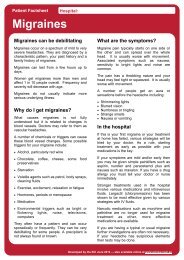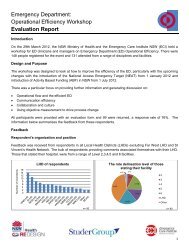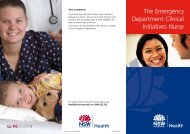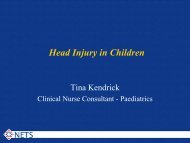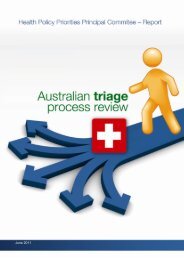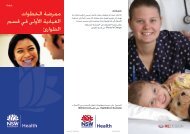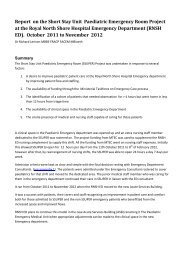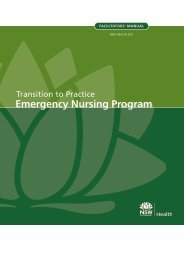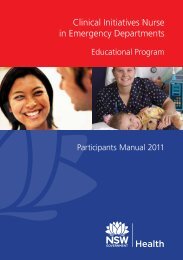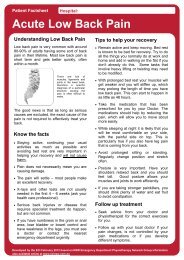Emergency Department Models of Care 2012 - NSW Health
Emergency Department Models of Care 2012 - NSW Health
Emergency Department Models of Care 2012 - NSW Health
- No tags were found...
Create successful ePaper yourself
Turn your PDF publications into a flip-book with our unique Google optimized e-Paper software.
SECTION 4Streamlining access to acute careThis section provides an overview <strong>of</strong> models <strong>of</strong> care that are outside the ED that can support patient flow and provide timelyaccess to acute care services.The models included in this section can facilitate the diversion <strong>of</strong> non-emergency department patients away from the ED andinto the most appropriate care setting. <strong>Models</strong> <strong>of</strong> <strong>Care</strong> that provide acute care outside <strong>of</strong> the ED include:■■■■Medical Assessment UnitsSurgical Assessment UnitHospital in the HomePsychiatric <strong>Emergency</strong> <strong>Care</strong> CentresEach <strong>of</strong> these initiatives is detailed on the following pages.4.1 Medical Assessment UnitThe Medical Assessment Unit model <strong>of</strong> care is currently being evaluated in <strong>NSW</strong> and as such elements <strong>of</strong> the model maychange. You can find information about the MAU model on the ARCHI website at: http://www.archi.net.au/resources/moc/complex/mau-nswWhat is the model? ■ Medical Assessment Units (MAUs) are inpatient short stay units that are usually close toor co-located with an <strong>Emergency</strong> <strong>Department</strong>. They are typically staffed by inpatientteams.■■■MAUs provide an alternative to treatment in the ED for undifferentiated, complex,chronic, non-critical medical patients. These patients are not critically ill but havecomplicated conditions that take time to assess, and require a range <strong>of</strong> medical expertiseto diagnose and treat.The MAUs provide these patients with an experienced and comprehensivemultidisciplinary team that is able to conduct rapid assessments, reach faster diagnosesand provide earlier treatments.Once patients are assessed, their condition diagnosed and some treatment provided,patients will be able to return to home within 48 hours (with community services ifneeded) or if further treatment is needed, they will be referred to an inpatient team andtransferred to a specialty ward.<strong>Models</strong> <strong>of</strong> <strong>Emergency</strong> <strong>Care</strong> <strong>NSW</strong> HEALTH PAGE 45




